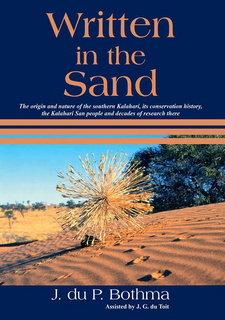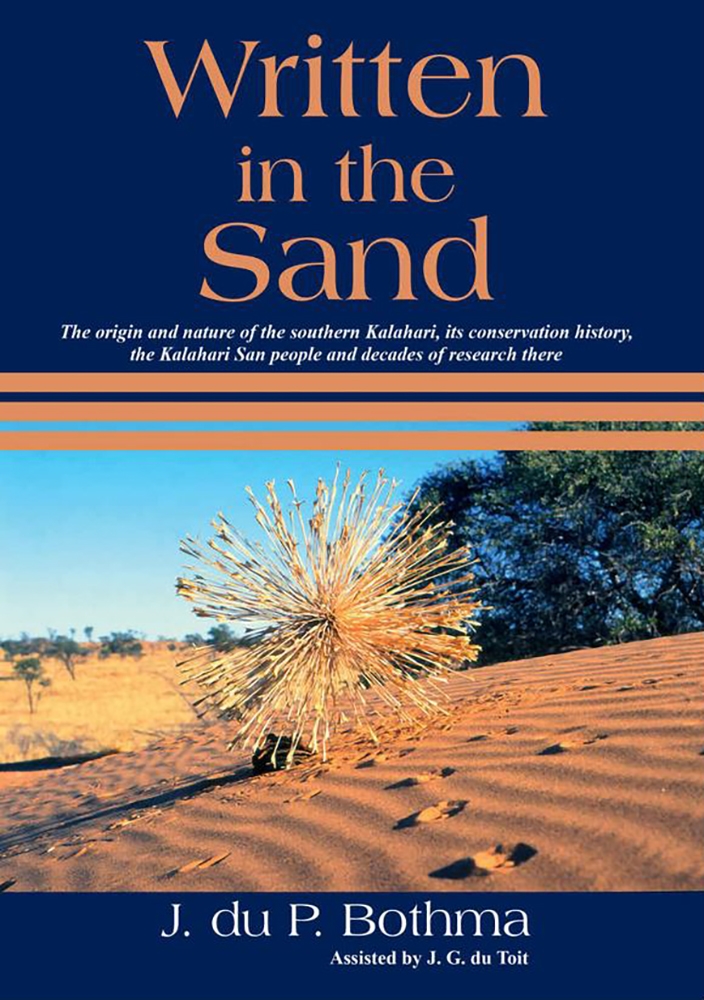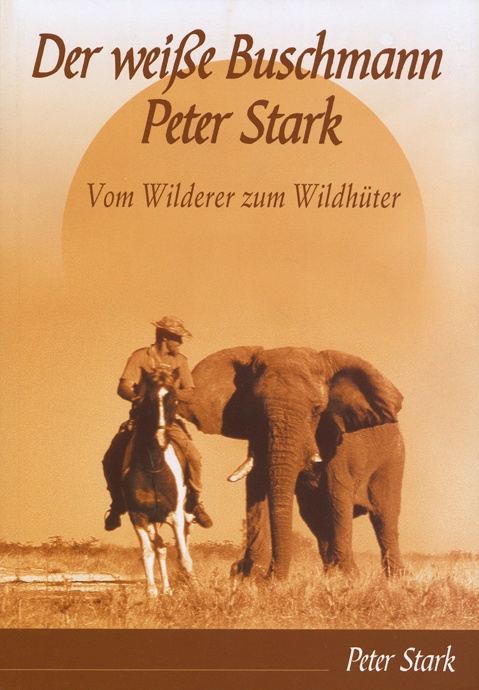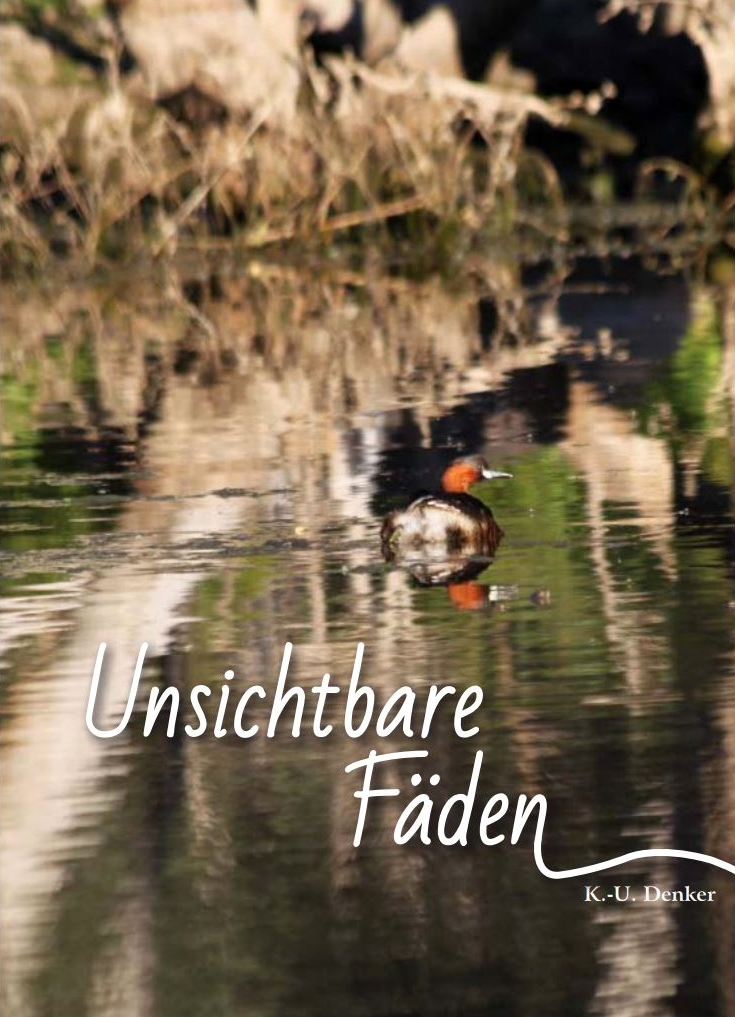Written in the Sand: The origin and nature of the southern Kalahari, by J. du P. Bothma

Written in the Sand: The origin and nature of the southern Kalahari, by J. du P. Bothma. Cape Town, South Africa 2020. ISBN 9780620802574 / ISBN 978-0-620-80257-4
Written by one of the most influential international wildlife ecologists, Written in the Sand: The origin and nature of the southern Kalahari, by J. du P. Bothma, is a captivating book written in an eloquent and stimulating style on the Kalahari region.
The Southern Kalahari
I first experienced the southern Kalahari as a young post-graduate student in December 1962 in the company of the legendary Prof. Fritz Eloff (1902-2013) who did research on wildlife of this remote and arid region. With us on this visit was Hendrik Nolte, Gerrie De Graaff and Jan Nel, while in the Kalahari I met Stoffel and Elias le Riche. Both the Le Riche brothers eventually followed in the footsteps of their father Joep le Riche to become Wardens of the Kalahari Gemsbok National Park and we became life-long friends. However, I do not hesitate to admit that my first introduction to the southern Kalahari was a totally new experience and that I never slept much during my first visit. Part of the reason was a fear of the unknown and part of it was awe in experiencing this immense landscape for the first time. When we arrived at the Twee Rivieren Rest Camp in the Kalahari Gemsbok National Park in a two-wheel drive car after an arduous trip along the sandy Kuruman riverbed, Stoffel and Elias le Riche waited to guide us on a trip up the then still trackless Nossob riverbed and then eastwards away from it deep into the adjacent pan country of Botswana. Stoffel, then a ranger at Mata Mata, was driving a pink-coloured 4x4 Chevrolet half-ton truck and Elias, a student, a copper-coloured 4x4 Chevrolet three-quarter ton truck. Deep in Botswana the left front wheel of Stoffel's truck suddenly sheared the pin of the front ball joint and damaged the outer casing of the wheel bearing. We were by then returning to the Nossob riverbed from deep within Botswana, but were still a fair distance away from it. As Stoffel and Elias always carried a metal trunk filled with an amazing assortment of nuts, bolts and various odd spare parts with them - almost a spare truck in parts - they soon had the wheel off and had jury-rigged a replacement ball-joint pin. The wheel bearing was then removed and the damaged outer casing was replaced with a well-greased sleeve that was cut from a condensed milk tin. Fortunately these tins at that time were still made of stern stuff. After several more hours we managed to limp back to the Nossob riverbed which we entered near Lijersdraai windmill in the far north of the park. As we neared the riverbed, we saw a herd of red hartebeest with young calves moving off into the dunes to the south-west. At that time, Stoffel and Elias had instructions from their father to capture a number of red hartebeest calves alive during our return trip to Twee Rivieren to restock the Mountain Zebra National Park with them. Leaving the crippled truck in the riverbed, we offloaded the gear from the other truck before we all piled on board to try and capture some of these calves. At that time such capture consisted of chasing down the calf at speed, with a person flinging himself on top of the calf as the vehicle drew level with it - no fancy dart gun and darts yet which only came much later. Needless to say, this approach was a wide open invitation to disaster. As we topped a particular dune crest at high-speed in pursuit of the first calf we were suddenly confronted by an angled, dead camel-thorn tree stump with a dreadfully sharp end pointing directly at the radiator of the truck. Despite making a near crash-stop we ended with the sharp end through the radiator and a deep feeling of despair. [...]
This is an excerpt from Written in the Sand: The origin and nature of the southern Kalahari, by J. du P. Bothma.
Title: Written in the Sand
Subtitle: The origin and nature of the southern Kalahari, its conservation history, the Kalahari San people and decades of research there
Author: J. du P. Bothma
Independently published
Cape Town, South Africa 2020
ISBN 9780620802574 / ISBN 978-0-620-80257-4
Softcover, 15 x 22 cm, 274 pages
Bothma, J. du P. im Namibiana-Buchangebot
Written in the Sand: The origin and nature of the southern Kalahari
Written in the Sand: The origin and nature of the southern Kalahari, its conservation history, the Kalahari San people and decades of research there.
Of Silk and Sand: The origin, life and times of the lion and leopard
Of Silk and Sand: The origin, life and times of the lion and leopard is the end product of many years of studying lions and leopards in the Kalahari.
Weitere Buchempfehlungen
Der weiße Buschmann Peter Stark
Als weißer Buschmann wurde Peter Stark wegen seiner legendären Fähigkeiten im Busch bezeichnet. Dies ist seine Lebensgeschichte als Wilderer und Wildhüter.
Unsichtbare Fäden
Unsichtbare Fäden: eine Liebeserklärung Kai Uwe Denkers an die Natur der Nordkalahari Namibias, an seine Menschen und an die Familie. Eine wunderbar zärtliche Lektüre.
An Overview of Freehold Conservancies in Namibia
The Conservancy Association of Namibia (CANAM) gives an detailed overview of freehold conservancies that have been intitiated by the 23 members.





